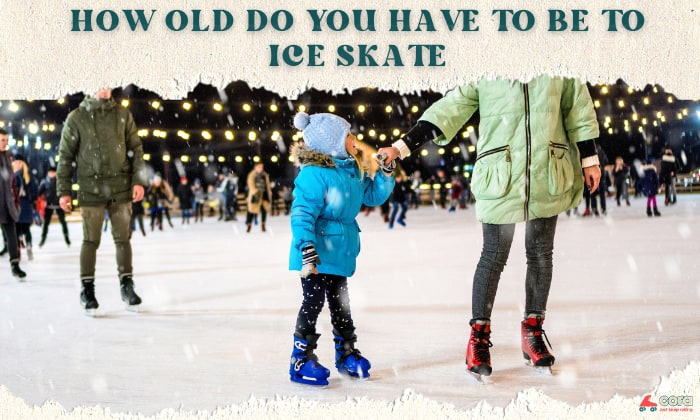Roller skating, a dynamic blend of recreation and sport, offers an exhilarating way to glide across surfaces on wheels.
However, beneath the graceful moves and effortless spins lies a complexity that often surprises newcomers. The questions arise: Is roller skating hard? Why is roller skating so hard?
One reason you may find roller skating hard is that you have to master balance and body coordination. In addition, this is a strenuous activity that calls for a great deal of resilience and bravery.
Page Contents
Why is Roller Skating So Difficult?
Roller skating is hard and presents a range of obstacles for beginners. Some of these difficulties include individuals’ balance, coordination, and muscle control.
1. Balance
One of the main reasons for its difficulty is the inherently unstable nature of the skates themselves.
Unlike shoes, which provide solid and consistent support, roller skates have wheels, so maintaining proper balance and weight distribution is essential to prevent dangerous wobbling or falling.
This requires physical adjustments and mental focus, especially for beginners still learning the fundamental techniques. For most people, it will take a lot of time to find their own balance on skates without leaning on some kind of support.
2. Body Coordination
Another aspect contributing to the difficulty of roller skating is the requirement for synchronized movement of both legs. Skaters need to coordinate the actions of their legs to push off, glide, and steer effectively.
This demands a certain level of muscle memory development and fine-tuned motor skills. Beginners often struggle to master this coordination, leading to awkward movements, stumbling, and falls.
3. Body Strength
Moreover, roller skating involves using muscles that most people are not accustomed to in their daily activities. The stance and posture required for balance engage various muscle groups, including those in the legs, core, and arms.
As a result, muscle fatigue and soreness are common. Overcoming these takes time and consistent practice.
4. Fear of Falling
Fear of falling is a psychological hurdle that many beginners encounter. The prospect of losing balance and potentially getting hurt can generate anxiety and tension, making it challenging to relax on the skates.
This fear can inhibit the natural fluidity of movements, hindering progress and preventing skaters from fully enjoying the experience. Overcoming this fear requires patience, gradual exposure, and building confidence through small achievements.
5. Equipment
The type of roller skates used can significantly affect the overall skating experience.
Different types of skates, such as those designed for speed, artistic routines, or outdoor environments, come with distinct features that influence their maneuverability and performance.
Beginners who are unaware of these nuances might find themselves struggling if they are not using skates suited to their intended skating style. For example, people skating in indoor rinks should pick skates with hard wheels, preferably around 88A to 102A, whereas those who like venturing outside need soft wheels (78A to 84A)instead.
6. Challenging Surfaces
Beginners may find their path to mastering roller skating even more difficult if they practice on slippery surfaces, uneven grounds, or areas with plenty of obstacles. These will make it even harder to maintain your balance.
If you’re just starting, you’d want to choose surfaces that are easy to skate on, such as smooth floors, tennis courts, or indoor rinks. At the same time, you’d want to pick empty areas so you won’t be distracted by people zooming around.
Tips for Learning to Roller Skate
While roller skating is undoubtedly challenging, several strategies can help make the learning process smoother:
- Choose The Right Skates: Opt for skates that suit your skill level. Beginner-friendly skates often have wider wheels for stability and a comfortable fit.
- Protective Gear: Wearing safety gear such as helmets, knee pads, elbow pads, and wrist guards can boost your confidence and alleviate the fear of falling.
- Start Indoors: Indoor skating rinks provide a controlled environment that’s conducive to learning.
- Practice Balancing: Spend time practicing balancing on your skates by holding onto a stable surface or practicing one-foot glides.
- Take It Slow: Progress gradually. Start with basic movements like gliding and stopping before attempting more advanced techniques.
- Use Aids: Consider using aids like a skate trainer or a friend’s assistance to build your confidence before skating solo.
Related guide: Tips to get better at roller skating
Conclusion
Why is roller skating so hard? Roller skating may seem difficult for beginners due to various challenges, such as physical demands and fear of falling.
However, these difficulties can be overcome with the right approach and determination. Following helpful tips, practicing consistently, and maintaining a positive attitude can make learning roller skating much smoother and more enjoyable.

Harrison is a skating enthusiast who picked up the sport during her student exchange years in Canada. She has been a skating coach for children and teens for 3 years and now holds classes as a freelancer. Harrison entwines her experience leading skating classes in the content published on Cora to help readers fall in love with skating, just like she did.













